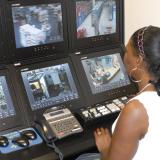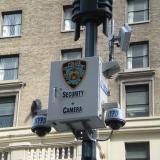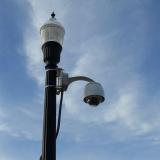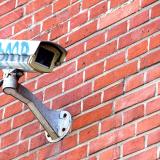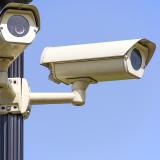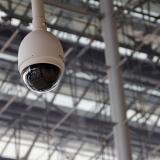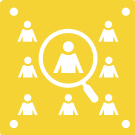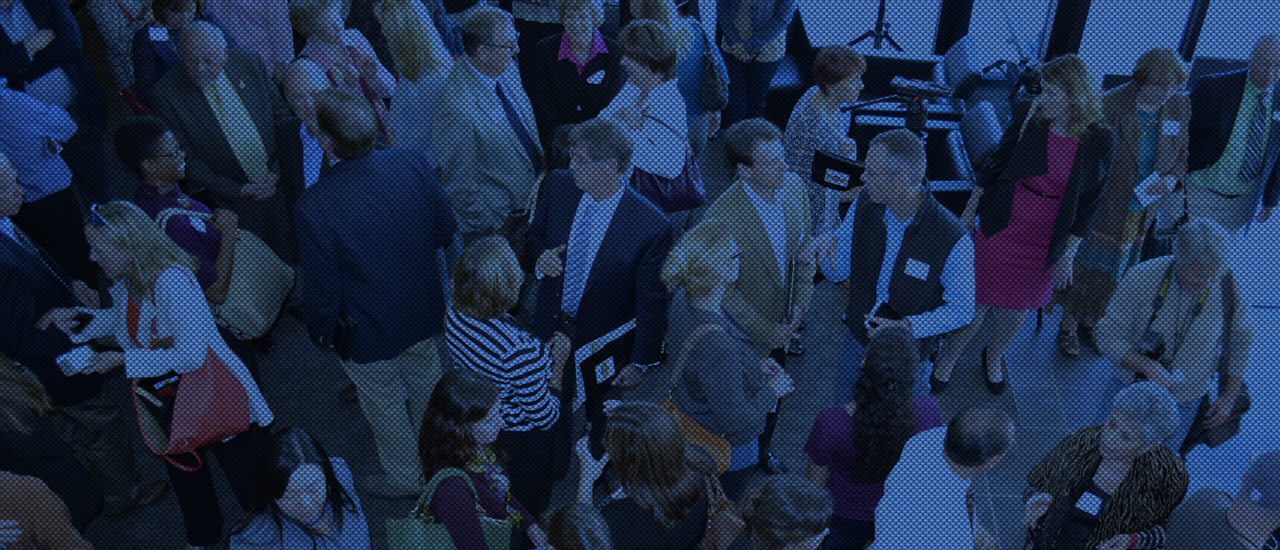
Image Gallery
Fear of terrorism prompted many cities to consider installing massive video surveillance systems. Less than a year after 9/11, New York City announced plans to build a surveillance center where police would monitor a growing network of cameras around the clock. Similarly, city officials in Boston, Denver, San Francisco, Pittsburgh, and Washington, D.C., expanded their own massive camera systems. While terrorism fears have begun to subside, police in many cities now hope they can use cameras to solve and deter more ordinary crimes.
The capabilities of today’s video surveillance networks outclass the stationary cameras and grainy CCTV screens most people are familiar with. The city of Chicago has developed one of the most expansive and intrusive camera systems in the United States. It combines a network of at least 10,000 cameras with advanced analysis tools to watch every street corner in the city.
CIVIL LIBERTIES CONCERNS
As the ACLU of Illinois wrote in its report on Chicago’s system, a camera on every corner “invades the freedom to be anonymous in public places, a key aspect of the fundamental American right to be left alone.” The system’s computer can pick a person and follow him, jumping from camera to camera as he moves through the city. This allows for monitoring just as intrusive as placing a secret GPS tracker on the person. In addition, the use of analytics with camera systems intensifies privacy concerns. Human behavior is complex, subtle, and unpredictable. Any analytics system that is sensitive enough to “notice” a real crime will probably also turn up a huge number of false positives. That means that some people could be scrutinized or hassled for innocent behavior that an algorithm registers as unusual. Over time, people might change their behavior to avoid standing out even more than they do under traditional surveillance systems.
Many of us have become inured to the glare of surveillance cameras. We encounter them in department stores, sports stadiums, and many public buildings. But modern, government owned camera systems work in a more intrusive way than you might think. As technology continues to evolve, they’ll become cheaper and easier to use.
- Many major cities have the ability to field thousands of cameras, all linked to a surveillance nerve center. Video from these cameras link back a central repository in one of two ways. Many communities still use a classic closed-circuit television system that conducts feeds to screening stations along video cables. Increasingly, major cities opt for wireless transmission. Not only can a wireless network cover a greater area, but officers can often access the feeds from mobile computers in their patrol cars.
- Digital video data vastly increases surveillance capabilities. Advances in data storage have made it possible for police to cheaply collect and hoard hundreds of thousands of hours of video each day. The technical ability to maintain a record of all movements in a city indefinitely is fast approaching. Digital video, moreover, can easily be shared with other agencies, stabilized and focused, and dissected by powerful forensic analysis programs.
- Modern camera systems allow operators to pan, tilt, and zoom in on the people they’re watching. This allows operators to better focus their gaze on potential wrongdoers. But research on camera operators in the U.K. found that they frequently used this ability to ogle strangers. They also tended to target racial minorities for special scrutiny.
- Many camera systems now use video analytics to watch for “suspicious” behavior. As ACLU privacy expert Jay Stanley notes, “A video camera on its own is dumb, like your retina being hit by photons. Video analytics is an attempt to create a brain behind the eye to interpret those signals.” These systems watch for hand gestures, movement patterns, etc., that raise the computer’s red flags.
Data on the full extent of camera surveillance in America is scanty. However, public safety officials have installed extensive public camera systems in hundreds of cities, from metropolises like New York and Chicago to small suburban towns like Renton, WA. Presently, only a few major cities have proposed the sort of advanced camera system that Chicago has introduced. As the technology grows cheaper, however, these systems may tempt public safety officials in more and more communities.
Examples of Use
When government agencies consider acquiring and using surveillance systems, communities and their elected officials must both weigh the benefits against the costs to civil liberties and carefully craft policies and procedures that help to limit the negative effects that surveillance will have on fundamental rights. For a useful list of considerations, please visit the recommendations page.
